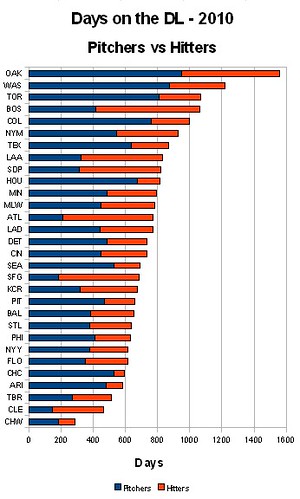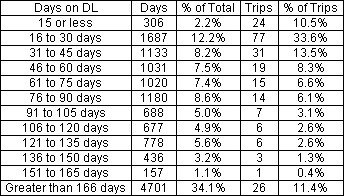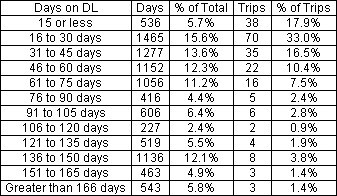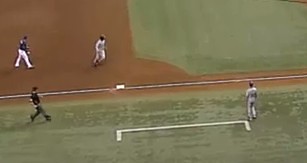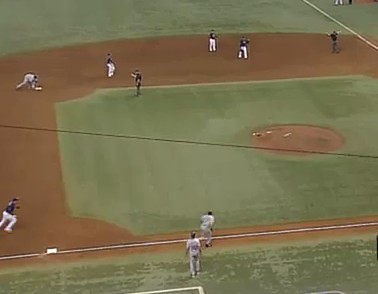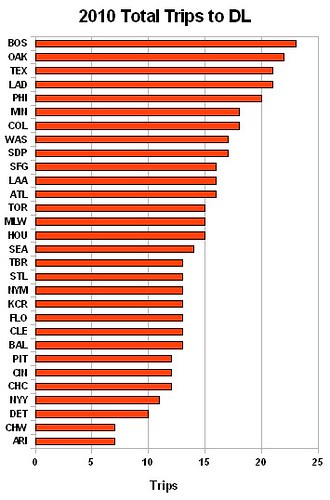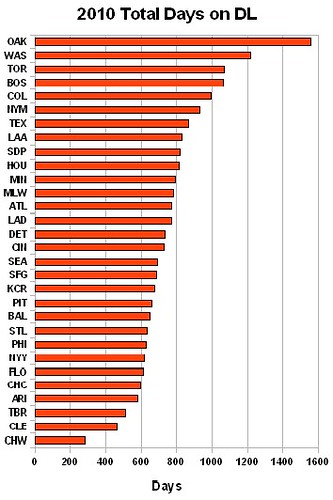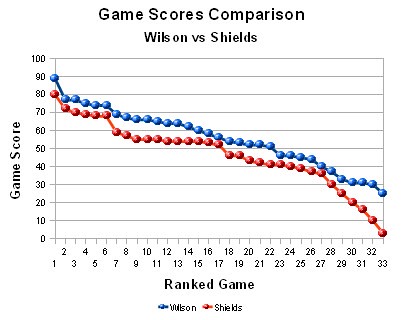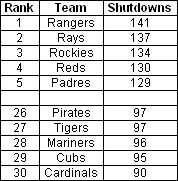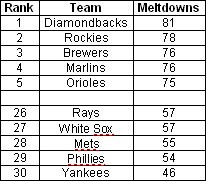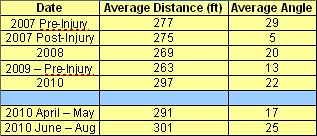A couple of highly touted catching prospects in the minors, William Myers (Royals) and Jesus Montero (Yankees), had a great 2010 season hitting. There have been some concerns with both players regarding their ability to handle the various aspects of catching (e.g. handling pitchers, throwing out runners, blocking pitches, etc). With talk of the Royals and Yankees possibly moving them off of catcher to another position, I decided to look at few items that teams must consider when moving a catcher to another position.
Positional Value
A good-hitting catcher is rare to find. After Joe Mauer, Brian McCann, Victor Martinez and Mike Napoli, the ability for current catchers to hit this season drops off considerably.
A catcher’s value is best seen when looking at the differences in WAR adjustments given for various positions. Generally, a catcher is moved to one of three positions in the field if he can’t catch: first base or one of the two corner outfield positions. So a team usually only has one of the following six options to a get a good-hitting catcher in the lineup (I ignored third base, as over 75% of the games were from one player, Brandon Inge):
Catching only (does’t play in field on days off – assume 1/6th of days will be off)
Catch and DH on days off (Joe Mauer clone)
Catch and 1B on days off (Victor Martinez clone)
First Base
Corner Outfield
Using positional adjustments, here is how much difference there is in value (WAR) for each of the preceding positions considering the ability of the catcher to hit (assuming league-average fielder):

Being a catcher, compared to the other position choices, adds anywhere from 1 to 2 WAR contributed by the player. This difference could be nice advantage for a team that has the catcher under team control for several seasons.
Defensive Value
In the previous example, I considered catchers to be league average in their defense. I decided to see how well catchers did when moved to a new defensive position.
One problem with moving catchers to another defensive position is seeing how the player’s defense translates to the new position. Defensive numbers for catchers would be tough to compare to other positions, so I decided to lump all catchers together and see how they did as fielders. I took all catchers that caught a minimum of 10 games in any season from 2002 to 2009 and started any other position in the field. Then, I combined the UZR for all these players. Finally, I calculated the UZR/150 for these players and regressed the values a bit depending on the total games played. Here are the results:
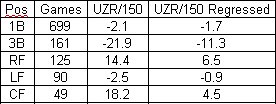
As a whole, catchers end up generally being fairly decent fielders, but seemed to take a little better to the outfield than to the infield. Looking at the numbers a little further, it can be seen that a catcher’s ability to throw translates well to the outfield. Here are the ARM components of UZR for the two corner outfield positions:

Most of the defensive value a catcher has in the outfield is in his arm.
Conclusions
Several outstanding hitting catcher prospects in the past had questionable defense and pitch calling skills while in the minors, but their bats were too good to keep them out of the majors. Carlos Delgado caught in 406 of the 524 games he played in the minors over five years, with games played at 1B coming only in the last two years. Once in the majors, he caught a total of two games, but went on to become a great-hitting first baseman. Victor Martinez on the other hand struggled a year or two behind the plate in the majors, but ended up becoming a passable catcher.
Teams understand the value of keeping a great hitter behind the plate. The usual positions that the catcher will eventually transition are considered to be positions known for good hitters (1B, DH, corner OF). In my opinion, a prospect will have to be pretty atrocious in his catching duties to move him away from catching considering the extra value a good-hitting catcher can bring to a team.
